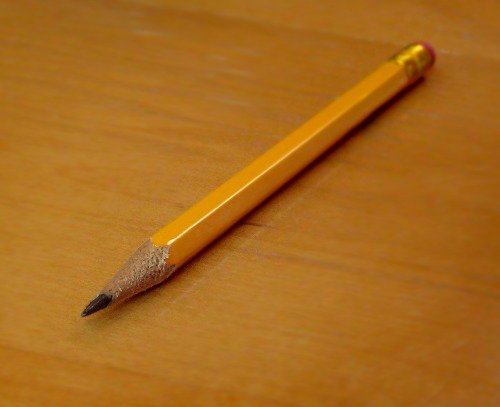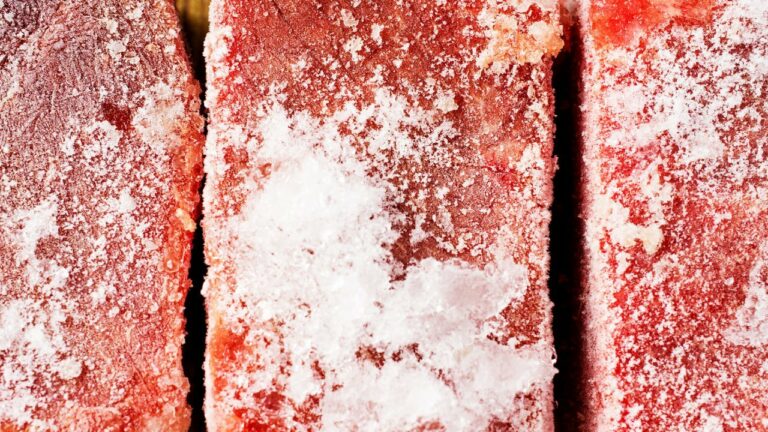What Are Pencils Made Of Today?
What Are Pencils Made Of Today? The history of pencils is filled with intrigue. In the present day, pencils have evolved with the use of contemporary materials and cutting-edge methods.
Gone are the days of solely graphite and wood, as pencils now integrate synthetic materials that have transformed the realms of writing and drawing. Join us as we delve into the mysteries behind the production of modern-day pencils.
What Are Pencils Made of Today?
Pencils have been essential for writing and drawing for centuries. They are used by students, artists, engineers, and professionals. In this article, we will explore pencil production and materials used. From the lead core to the casing, we will uncover the secrets behind this tool.
The Evolution of Pencil Manufacturing:
Pencil manufacturing has greatly advanced since it began. The process has progressed from using lead and silver styluses to modern pencils. Let’s explore the evolution of pencil manufacturing.
Ancient Writing Tools:
Before we dive into modern pencil production, it’s intriguing to explore the ancient writing tools that laid the foundation for the pencil as we know it today. In ancient civilizations, people used various materials to create primitive writing instruments. Here are some notable examples:
- Styluses: Ancient Egyptians used styluses made of metal or bone to write on papyrus.
- Bamboo Sticks: Chinese scholars used sharpened bamboo sticks to write characters on bamboo slips.
- Quills: During the medieval period, feathers, particularly those from geese, were fashioned into quills for writing.
The Discovery of Graphite:
The modern pencil owes its origins to the discovery of graphite, a naturally occurring form of carbon. In the 16th century, large deposits of graphite were found in Borrowdale, England. Initially, people believed it was a form of lead and referred to it as “black lead.” The soft and smooth nature of graphite made it an ideal material for writing and drawing.
The Anatomy of a Pencil:
Now that we have explored the historical aspects of pencil production, let’s dissect the anatomy of a modern pencil. A typical pencil comprises several distinct components that come together to create a functional and reliable tool.
Lead Core:
Contrary to popular belief, the “lead” in pencils is not made of actual lead but rather a mixture of graphite and clay. The proportions of graphite and clay determine the hardness or softness of the lead. Higher clay content produces harder leads, while more graphite results in softer leads. The lead core is responsible for leaving marks on paper when the pencil is used.
Wooden Casing:
The lead core is encased in a wooden cylinder, typically made of cedar wood. Cedar wood is widely preferred due to its smooth texture, durability, and ease of sharpening. The casing protects the lead core from damage and provides a comfortable grip for users.
Ferrule and Eraser:
At the end opposite the lead core, a metal ferrule secures the eraser in place. The ferrule is usually made of aluminum or brass and holds the eraser firmly. The eraser, often made of synthetic rubber, allows users to correct mistakes and erase marks.
Modern Materials in Pencil Production:
While graphite and wood remain the primary materials in pencil production, modern pencils also incorporate various other materials to enhance their functionality and aesthetics. Let’s explore some of these materials in detail.
Graphite:
As mentioned earlier, the lead core of a pencil is primarily composed of graphite. Natural graphite is mixed with varying amounts of clay to achieve the desired hardness. The graphite-clay mixture is then heated and extruded into thin rods, which are then cut into pencil-length cores.
Wood:
Cedarwood has been the preferred choice for pencil casings due to its favorable properties. The wood is sourced from cedar trees, which are known for their straight grain, lightweight nature, and resistance to warping. These characteristics make cedar wood ideal for pencil production.
Recycled Materials:
In recent years, there has been a growing emphasis on sustainability and environmental consciousness in manufacturing processes. Pencil manufacturers have started using recycled materials in their production. Recycled paper and cardboard are often used for the casings, reducing the demand for new timber.
Paint and Lacquer:
To enhance the appearance and durability of pencils, manufacturers apply paint and lacquer to the wooden casings. These coatings not only protect the wood but also provide a variety of colors and designs for consumers to choose from.
Ferrule:
The metal ferrule that holds the eraser in place is typically made of aluminum or brass. These metals offer strength, corrosion resistance, and affordability. In some high-end pencils, gold or silver-plated ferrules are used to add a touch of luxury.
Eraser:
Erasers are often made of synthetic rubber, which provides effective erasing capability and durability. Synthetic rubbers like styrene-butadiene rubber (SBR) or vinyl are commonly used due to their erasing performance and ease of molding.
The Manufacturing Process:
Now that we have explored the materials used in pencil production, it’s worth understanding how pencils are manufactured. The pencil manufacturing process involves several intricate steps, each contributing to the creation of a functional and high-quality pencil.
1. Material Preparation:
The first step in pencil manufacturing is preparing the materials. Graphite and clay are carefully measured, mixed, and blended in precise ratios to achieve the desired lead hardness. The wood for casings is sourced, cut, and seasoned to ensure durability and prevent warping.
2. Lead Core Formation:
Once the graphite and clay mixture is ready, it is extruded through a die to form long, slender rods. These rods are then cut into pencil-length cores, which will eventually become the writing surface of the pencil. The cores are carefully inspected for quality and uniformity.
3. Casing Production:
The wooden casings are manufactured separately from the lead cores. Cedar logs are cut into slats, which are further shaped and sanded to form the familiar cylindrical shape. The casings are then treated with paint or lacquer to enhance their appearance and protect the wood.
4. Assembly:
In the assembly phase, the lead cores are inserted into the wooden casings using a process known as “laying-in.” The cores are positioned at the center of the casings to ensure even weight distribution. The ferrule, typically made of metal, is crimped onto the end of the casing opposite the lead core.
5. Eraser Addition:
To complete the pencil, an eraser is attached to the end of the ferrule. The erasers are molded separately and secured in place using adhesive or mechanical means. The erasers are often pink in color, but variations in color and shape are also available.
6. Quality Control:
Before packaging, pencils go through a rigorous quality control process. Each pencil is inspected for defects, such as uneven lead cores, splintered casings, or loose ferrules. Any substandard pencils are discarded to ensure only high-quality products reach the market.
How Pencils Are Made | Made Here | Popular Mechanics
Faqs for What Are Pencils Made Of Today:
In addition to graphite, clay, and wood, there are other materials used in pencil production. The ferrule, which holds the eraser (if present) in place, is typically made of metal, such as aluminum or brass. The eraser itself can be made of various materials, including synthetic rubber or vinyl, and is attached to the ferrule by a metal clasp. Some pencils also feature a metal band called a crimp, which secures the eraser and ferrule to the wooden barrel.
Graphite is used in pencils because it has a unique combination of properties that make it ideal for writing and drawing. It is a form of carbon that is soft and brittle, allowing it to leave marks on paper with minimal pressure. It also has good conductivity, making it easy for the pencil to transfer graphite onto the paper. Graphite can be easily blended and smudged, which is advantageous for shading and creating gradients. Additionally, graphite is non-toxic and does not smudge or smear as much as other materials, making it a popular choice for pencils.
The clay used in pencil production serves several purposes. Firstly, it is mixed with graphite to create a more durable and smooth core. The clay helps bind the graphite particles together, preventing them from crumbling or breaking easily. It also adds hardness to the core, determining the pencil’s lead grade. The more clay there is in the mixture, the harder the pencil will be. Clay also helps control the darkness of the pencil, as it can lighten the marks made by the graphite. Overall, the clay enhances the performance and versatility of the pencil.
Wooden barrels are commonly used for pencils due to their availability, durability, and ease of use. Cedarwood, in particular, is favored for its natural resistance to cracking and ability to be sharpened without splintering. Wooden barrels provide a comfortable grip and make it easy to hold and control the pencil. They are also renewable and biodegradable, making them an environmentally friendly choice. Additionally, wooden barrels can be easily customized with various finishes, colors, and branding, adding to the aesthetic appeal of the pencil.
Yes, pencils can be made from recycled materials. Various companies produce eco-friendly pencils that utilize recycled paper for the barrel instead of wood. These pencils often have a recycled graphite and clay core as well. By using recycled materials, these pencils help reduce the demand for virgin resources and minimize waste. Some recycled pencils even come with innovative features like seed capsules embedded in the end, allowing the pencil to be planted to grow flowers or herbs after use.
Final Thoughts
Pencils today are made using a blend of materials. The lead core, known as the “lead,” is usually a mixture of graphite and clay, allowing for smooth writing or drawing on different surfaces. The outer casing is commonly made from durable wood, often cedar, which is easy to sharpen. Pencil production is increasingly focused on using sustainable and recycled materials to promote environmental consciousness. Overall, pencils are made with these materials to provide a practical and sustainable tool for writing and drawing.



